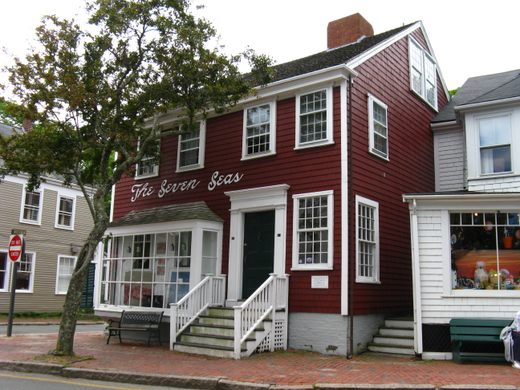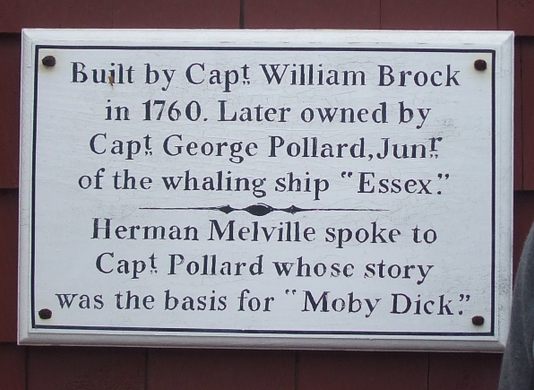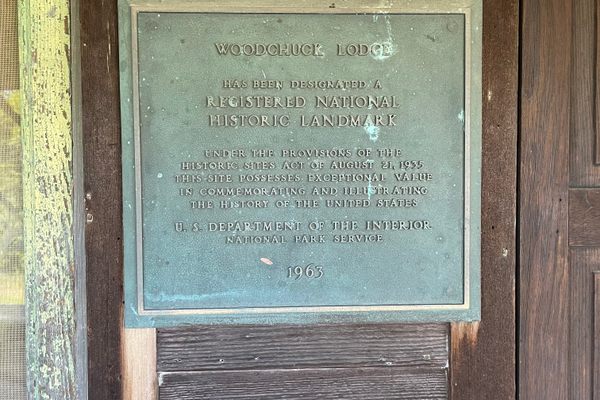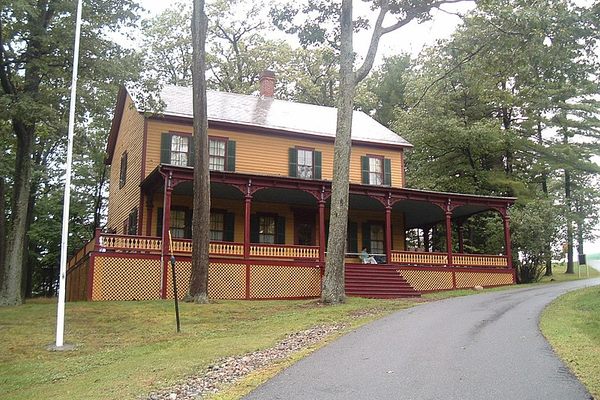AO Edited
Captain George Pollard House
The island home of an unlucky whaling captain whose story inspired a great American novel.
This classic saltbox house with brick-red wooden shingles on Centre Street in Nantucket, Massachusetts, was constructed in 1760 by Captain William Brock. It later became the home of Captain George Pollard, Jr., whose ill-fated voyage on the whaling ship Essex became the basis for Herman Melville’s opus, Moby-Dick.
Born in 1791, Pollard was a native son of Nantucket and grew up around the lucrative 19th-century whaling industry for which the island was famous. He served for four years on the Essex before being appointed its captain in 1819. The ship sailed from Nantucket under Pollard’s command on August 12, 1819. Accompanying him on the voyage was his 17-year-old cousin, Owen Coffin. Pollard made a promise to Coffin’s mother to keep the boy safe.
On November 20, 1820, the ship was twice-rammed by an enormous sperm whale. Pollard was not aboard at the time but in a smaller boat chasing another whale. When he returned to the capsized ship, the remaining crew off-boarded onto whaleboats and began drifting in the Pacific Ocean. Also on Pollard’s boat was his cousin, Coffin. The lifeboats carried food and water expected to last 60 days.
By January 1821, having depleted provisions on the lifeboats, the men were starving. They eventually resorted to cannibalism, eating the bodies of their companions that died from exposure. On January 20, 1821, there were only four men left alive in Pollard’s boat. They drew lots to determine who would die next so that the others could survive. Chosen for sacrifice, Owen Coffin was shot and eaten, despite Pollard pleading to take his young cousin’s place. A passing whaleship finally rescued Pollard and his surviving shipmates on February 23, 1821. He arrived back in Nantucket on August 5th.
He returned to the sea almost immediately as the captain of the whaling ship, Two Brothers. Also doomed, the ship ran into rocks near the Hawaiian Islands and sank, thus ending Pollard’s disastrous maritime career. He became Nantucket’s night watchman upon his final return to the island. Pollard died in 1870, having spent the rest of his life in the Centre Street house.
The Essex’s surviving First Mate, Owen Chase, wrote an account of the disaster entitled, Narrative of the Most Extraordinary and Distressing Shipwreck of the Whale-Ship Essex. Chase’s narrative was the inspiration for Moby-Dick, the whaling tragedy published in 1851 by Herman Melville. Melville didn’t visit Nantucket until 1852 where he met Pollard. They spoke only briefly, and Melville subsequently memorialized the whaling captain in his poem, Clarel.
Today, a small white plaque on an exterior wall denotes Pollard’s house. It states:
“Built by William Brock in 1760. Later owned by Capt. George Pollard, Jun’r of the whaling ship ‘Essex.’ Herman Melville spoke to Capt. Pollard whose story was the basis for ‘Moby Dick.’”
Unlike Melville’s Captain Ahab, Pollard was a quiet and unassuming man. It’s said that he remained haunted by his horrific sailing ordeals and never forgave himself for breaking his promise to keep his cousin safe.
Know Before You Go
The interior of the Captain George Pollard House is not accessible as of January, 2021. In the past it has been a gift shop and an art gallery, but is currently between tenants.
The white historical marker is affixed to the exterior front wall of the building.

















Follow us on Twitter to get the latest on the world's hidden wonders.
Like us on Facebook to get the latest on the world's hidden wonders.
Follow us on Twitter Like us on Facebook